28+ Sample Claim Letters
-
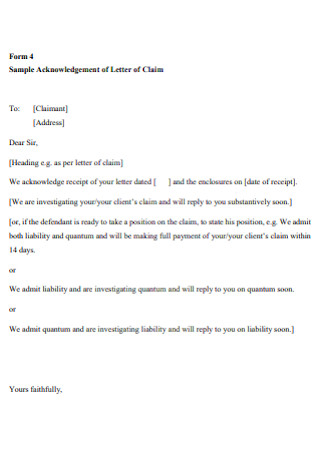
Acknowledgement of Letter of Claim
download now -
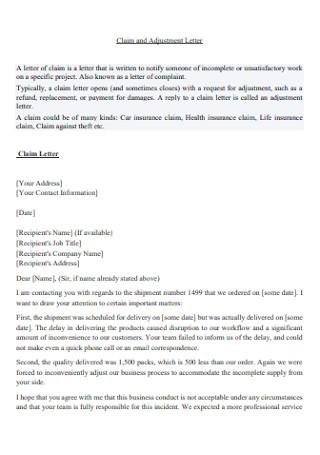
Claim and Adjustment Letter
download now -
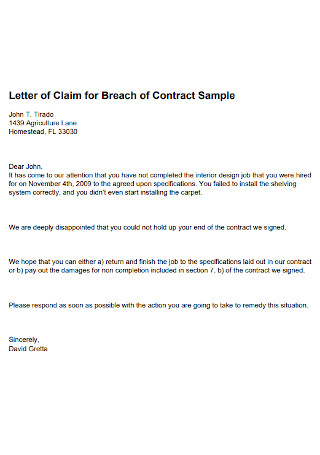
Letter of Claim for Breach of Contract
download now -
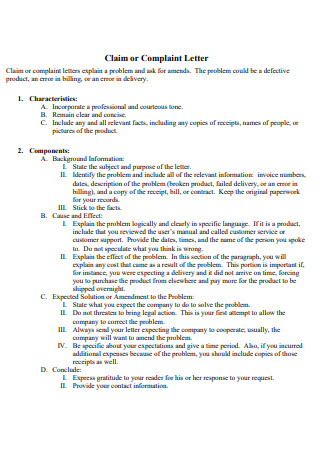
Claim or Complaint Letter
download now -

Sample Inconvenience Claim Letter
download now -

Compensation Claim Letter
download now -

Renunciation of Claim Letter
download now -

Cover Letter for Record Claim
download now -
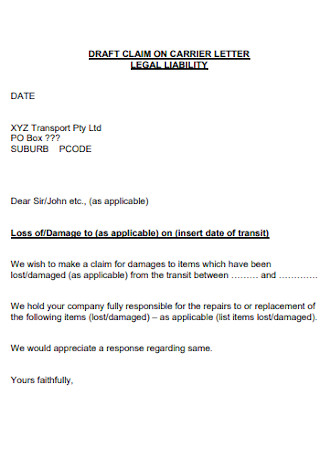
Claim on Carrier Letter
download now -
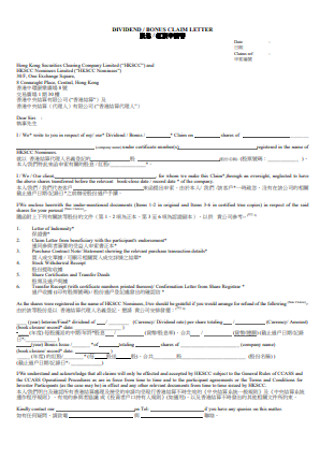
Bonus Claim Letter
download now -
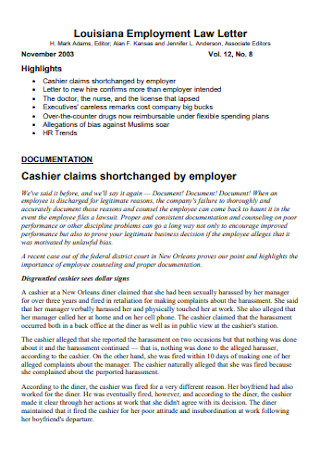
Employment Claim Law Letter
download now -
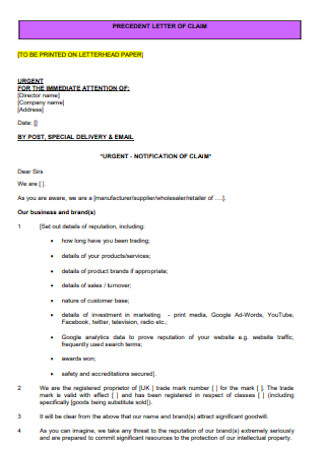
President Letter of Claim
download now -
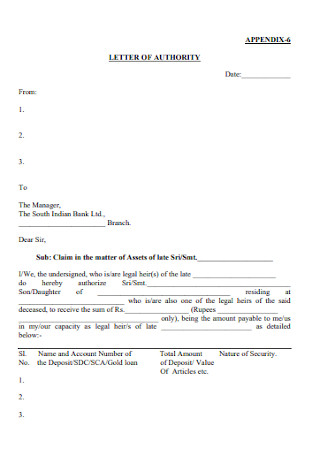
Claim Authority Letter
download now -
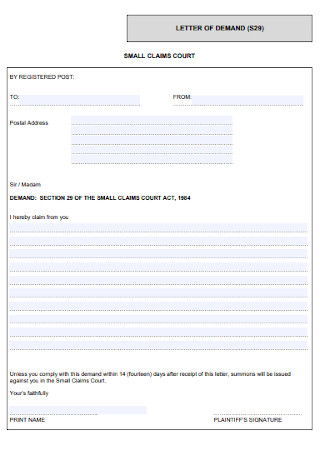
Final Letter of Demand Claim
download now -
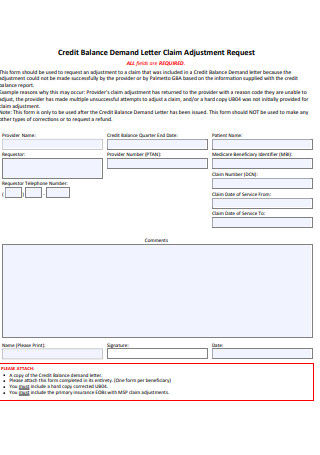
Claim Credit Demand Letter
download now -
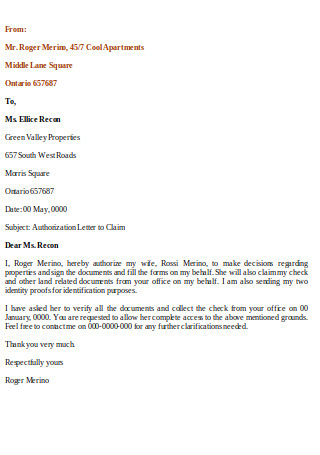
Authorization Letter to Claim
download now -
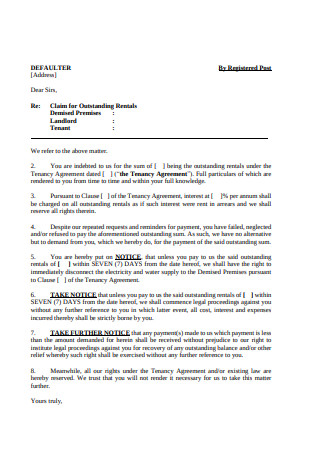
Claim Rent Letter
download now -
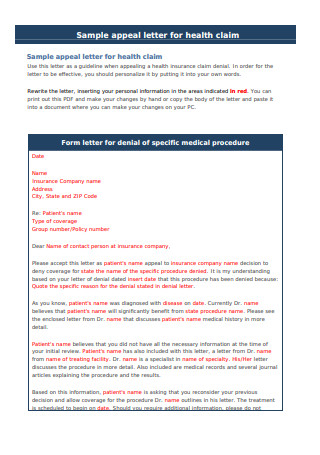
Health Claim Letter
download now -
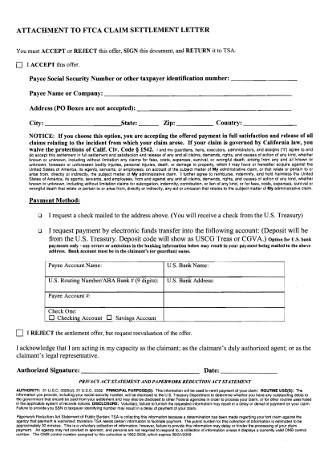
Claim Settlement Letter
download now -
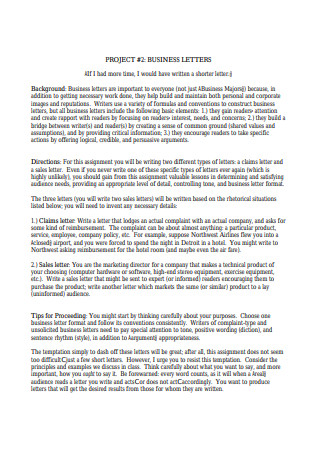
Sales and Claim Letter
download now -
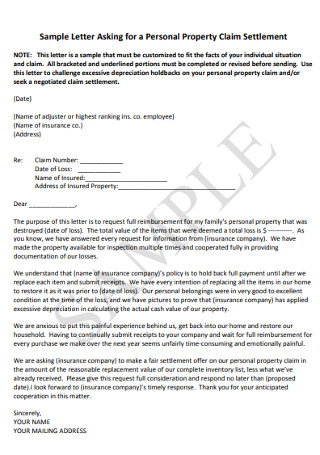
Property Claim Settlement Letter
download now -
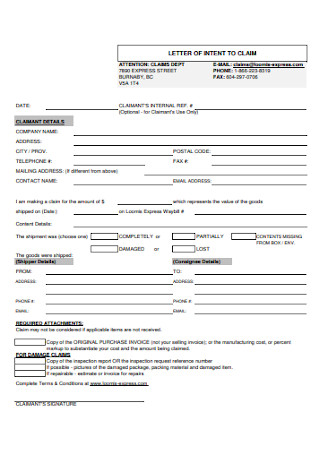
Letter of Intent to Claim
download now -
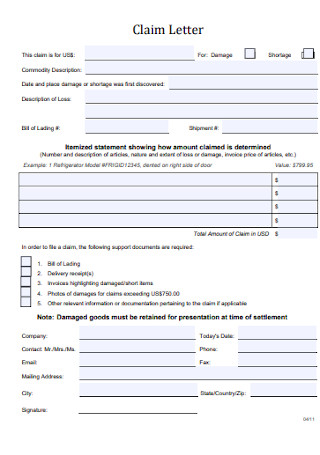
Simple Claim Letter Template
download now -
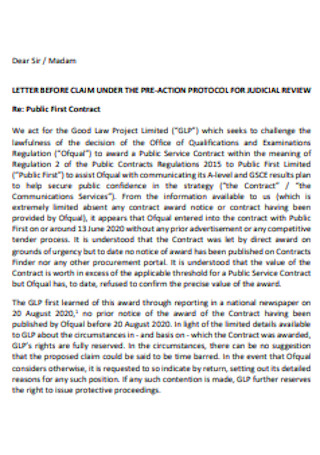
Standard Claim Letter
download now -
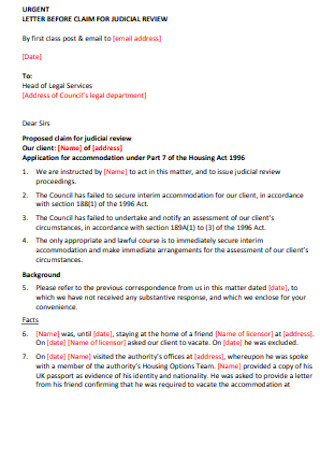
Claim Letter for Judical Review
download now -
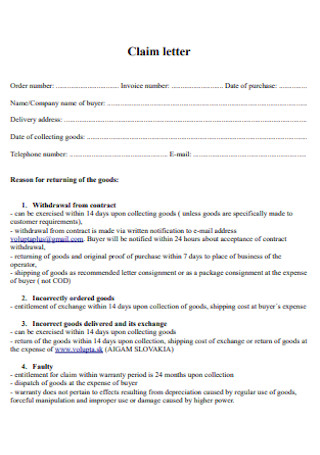
Standard Claim Letter Template
download now -
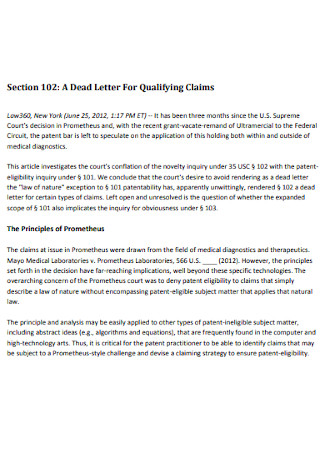
Letter For Qualifying Claims
download now -
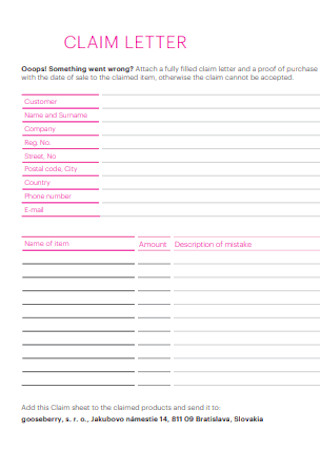
Printable Claim Letter
download now -
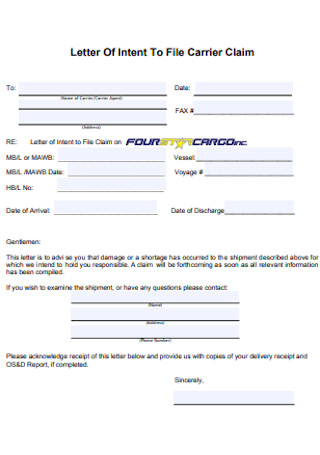
Letter Of Intent To File Carrier Claim
download now
FREE Claim Letter s to Download
28+ Sample Claim Letters
What Is a Claim Letter?
How to Write a Claim Letter
How to Make Your Claim Letter More Persuasive?
FAQs
What do you do after sending the letter?
Do your actions affect your future claims?
What Are the Things to Remember If You Are about to Decline a Claim?
What Is a Claim Letter?
We get it. You are here because you want to know how to properly write a claim letter. However, before you begin your project, you need to better understand what a claim letter is and what it is for you to utilize its capabilities. First, you need to understand that claim is a way to show your right for something. For instance, you left your wallet in an establishment and a few days later you want to retrieve it. You will go to the establishment and let them know that you left the wallet in their building and you want to get it back. However, you don’t want to go there empty-handed. Most establishments follow certain guidelines in claiming something in their lost and found booth. You will need to provide a letter expressing that you own the wallet. In their perspective, it’s documentation and a part of the proof that it is yours as you stated it.
Did you know that in 2020, the Federal Trade Commission recorded 1.4 million identity thief reports? That is twice the number of 2019’s. Disturbingly, these reports indicated that the thieves used their personal information to claim government benefits, such as the pandemic reliefs, such as the compensations for unemployed Americans. Additionally, the commission said that a number of these reports also involved the purpose of obtaining government-issued IDs such as driver’s license and passports, making the subject more seriously. That said, it is imperative that establishment personnel require claim letters from claimants along with other supporting documents before getting back their alleged belongings.
How to Write a Claim Letter
Part of the business plans of the business people is to outline the customer service technique that they are going to apply. Part of it is to listen to their customers’ complaints to serve them better. However, it may not be possible if you, as a customer, fail to do your part. Read the following instructions to ensure that you are sending a persuasive and well-written claim letter that would increase the possibility of having your request granted.
1. Start Your Claim Letter by Stating Your Intention
While it is tempting to write too formal content in a formal letter, when writing a claim letter, don’t overdo it. It is empirical that you express your thoughts in a way that anyone will understand. Start by letting them know what you are writing for a certain type of claim. Some companies handle various product lines. As much as possible, you don’t want to send a misinterpretation to the readers. There are chances that your letter will get routed to other departments incorrectly because of misinterpreted introduction. Be clear if you are writing an insurance claim, defective product, or bad service.
2. Include Specific Details, Such As Policy Number, Product Code, Etc.
To support your claim introduction, state the policy number if your claim is for an insurance product. If it is for certain products, include a product code. In that way, they’ll get hints on which skill set or knowledge should apply to handle your concern.
3. Describe Your Situation.
This is the part where you write what you have experienced. Write it systematically. At times, due to our emotions, we are unable to express them clearly. It’s a good thing that you are not saying your concern directly to the company. You are writing it, giving you a chance to sort your thoughts in a way that they will understand clearly. The first thing that you should do is to rehearse what you want to write in your mind. If you intend to recall an experience, start from the beginning. Write all the details and however messy it is, don’t correct it yet. Complete your draft before you do anything else. It will save you more time in the end. After that, review your statements. If you think that you can omit certain information without sacrificing what you intend to express, delete certain sentences. If you think that you need to add something to make your statements more sensible, this is the right time to do it.
4. State the Action That You Intend for Them to Do.
Writing your claims can be messy, with the emotions that you are probably in. Now that you have described your situation, think of the action that you need them to do. Put it in the paper. Just like describing your situation, make your draft first. Then, make the necessary edits once your draft is finished. Once done, read the description of your situation and the action that you intend the reader to do. This way, you will determine both parts are making sense and correlate to each other. There are chances that you still need to make some edits, but this time, it’s not gonna be too much.
5. Mention the Documents That You Have and Incorporate Them into Your Claim.
Strengthen your statements by providing evidence, such as screenshots, clips, and other documents that you think are relevant. At this moment, your thoughts are clearer than before you write them on paper. Therefore, you are now ready to mention the evidence basing on your statements. Take note, though, that mentioning the evidence without providing it can raise more questions, which can make them take more time to handle your claim because they may either look it for you or they’ll ask them from you and the turnaround time can be affected by different factors. Thus, make sure to attach the supporting documents before you proceed to the next step.
6. Provide a Date and Time of Your Expected Response.
It’s not that you are too demanding, but waiting around can be more nerve-wracking than doing something that is really nerve-wracking. State the date and time that you are expecting them to reply. In that way, you don’t have to bog your mind with maybes since you already have specifics. You can do certain steps in advance based on the specific timeframe that you have provided in the letter. Take note, however, that your means of sending your letter also affect the turnaround time of your letter. Consider all the factors that you think will apply in stating a timeframe that you wish for them to respond. You may also give them a call before sending it to them to determine how long they will respond to a claim. If possible, since your mind will be clearer at this stage, you may state your concern over the phone instead and use your letter as your guide in stating your concern. End your letter by saying thanks to the reader for reading your letter. You may never know what it meant for each person to receive a note that says as simple as thank you. It may help you achieve your goal here.
How to Make Your Claim Letter More Persuasive?
Be Respectful: When you write a claim letter, it is probably because you are disappointed with the service that you have received or you are upset for experiencing distraught moments. However, while expressing how you feel in the letter may help, maintaining the same negative feeling throughout the letter may do more damage or harm than good. Therefore, you must maintain your professionalism when writing the letter. Read over again to spot any statement that can be unnecessarily strong. Maintain respect throughout the letter. Be On Time: Many companies provide a time frame for the claims to become valid. That’s why it is important to ask for more details before buying certain products or availing of specific services. Do your research and make calls before sending the claim. If you are a busy person, including it in your weekly schedules may help. Follow the Company Guidelines: Certain companies have certain guidelines in terms of handling claims. They may require you to use their forms or follow certain formats. If that is the case, follow them. It will ensure that they will handle your claims faster. You can refer to their policy and procedures. Otherwise, you can use the samples that we gathered above. Be Clear: We have discussed it earlier, but we need to reiterate that you should be clear when expressing your thoughts in the letter. Make it more persuasive by systematically writing your letter. If you intend to request for the company to make certain adjustments, you may also refer to our article about adjustment letters.
FAQs
What do you do after sending the letter?
Just wait. You have done your part at this moment. You have specified a timeframe that should be ample for them to respond accordingly. Plan ahead of certain actions that you need to do. You can read our article about action list templates to help you out in outlining the things that you may need to do. If after the timeframe provided, you don’t hear back from them, execute the actions that you have outlined. If you stated in the letter that you will do certain actions if they don’t respond accordingly, such as going to the court, fulfill your promise.
Do your actions affect your future claims?
The answer depends on what type of insurance policy you are availing of. Ask yourself if you know exactly the scope and limitations of your insurance policy. Globalnews.ca reported on April 30, 2021, that a Canadian, Modsir Ayobi, almost failed to be granted his insurance claims, after making modifications to his vehicle. According to the news site, the 21-year-old was involved in a vehicular accident on March 12, leaving his 2020 Subaru BRZ in a total mess, which he leased for $500 per month. Little did he know that after spending $7200 a year for his insurance, the vehicle modifications that he made would result in unwanted insurance complications. Lucky for him, though, because, in the end, the insurance company agreed to pay in full after doing a review.
To avoid any insurance complications, the best thing to do is to contact the insurance company first if you are about to do any actions about your insured belongings. Reading the policy proposals or agreements that you are about to sign may also help. It will do you more good than you can imagine.
What Are the Things to Remember If You Are about to Decline a Claim?
If you are a rep from an insurance company, a person from an establishment’s lost and found booth, or anyone that handles a claim, this section is for you. Just like writing a salary negotiation letter, writing a claim rejection letter is a delicate task. Read the following tips to try controlling the situation before it even escalates.
Start Your Letter with a Statement of your Regrets
In writing any type of rejection letter, you should start your letter by stating your regrets because your institution is denying your claim. It’s going to negate the negative feeling that the reader must be feeling when you bring the bad news.
Don’t Forget the Policy Number, Product Codes, and More
To avoid any confusion, you have to emphasize the identification of the claim items that your reader is trying to claim. If this information is not available, try to look for other identification that would help the reader, which item you are trying to talk to him/her about.
State the Rejection Reasons
Just like writing a rejection letter for rental applications, you need to be more specific in why your rejection reasons are making sense, which is what the reader will look for after you have established that their claim has been rejected. Clearly state all of them and provide evidence and attach them to the letter through screenshots, clips, etc. as necessary.
Provide Options
If the reader still has options to correct the rejection reasons, state them after you have provided all the rejection reasons. Once they read this section, they may expect detailed instructions on how to do it. They’ll make sure that they correct it this time, so they may become more persistent. Therefore, they’ll make sure that their action plan is the best that they can provide.
Provide Contact Information
Speaking of instructions, you may not know if they’ll understand it clear enough as they don’t have the same knowledge as you. Therefore, you need to provide contact information where they can resort to if questions arise.
Reiterate your Regrets
We know that you have mentioned it in the first part of your letter and redundancy is not good, but not this part. This part will remind them how sorry you are for declining their claim. You will then end the letter saying that you value doing business with the customer and that you appreciate them.
Just like outlining information security policies, establishing an effective customer service strategy is a delicate matter that needs proper handling. By making sure that claims are handled properly, your company will have more chance of thriving, and with the things that we have discussed today, you’ll be able to handle claims wisely.
